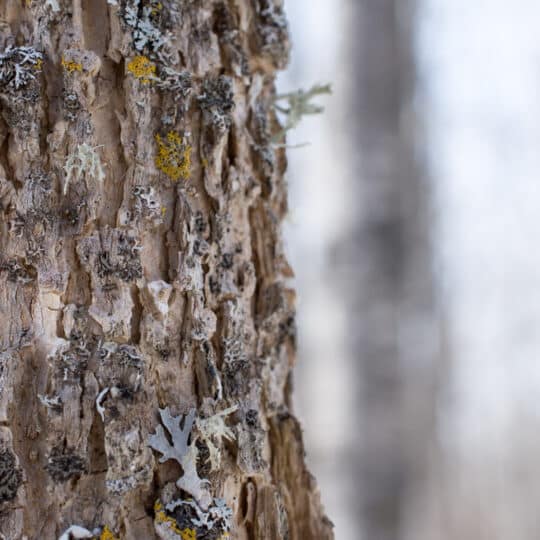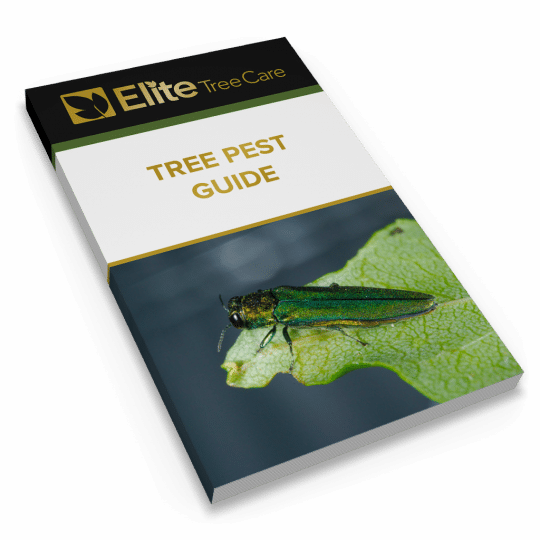9 Common Fall Tree Pests
How to Identify and Control Them
Posted
November 7, 2024

Autumn is a transitional season as many living things recover from the summer and prepare for the fall. Just as trees undergo a recognizable process as the leaves change and drop, certain pests are also hard at work, leaving damaging signs of their presence. Learn about some of the most common fall tree pests, and how to identify and control their population around your plants.
Common Fall Tree Pests
In the rush to get ready for colder months, certain tree pests become increasingly more active. Learning what trees they target and the signs of their damage can help when it comes time to control them.
- Emerald Ash Borer. Their name gives them away. These green beetles bore through ash trees, splitting the bark and creating exit holes. You may see more woodpeckers attracted to the tree and the canopy thinning since the larvae burrows under the bark and cuts off the flow of water and nutrients.
- Asian Longhorned Beetles target maple, birch, elm, willow, and other hardwood trees. They leave large exit holes and sawdust around the base of the trunk. Their tunneling weakens a tree structure, which could cause limbs to break.
- Aphids prefer birch, maple, and willow trees. They leave a sticky honeydew along leaves and branches, which turns the leaves yellow and encourages mold growth.
- Spider Mites target evergreen trees. You may notice the leaves turning a yellowish bronze color and a fine webbing across leaves and branches. Since they suck sap from the needles and leaves, this weakens the plan and makes it more susceptible to other pests and diseases.
- Scale Insects also feed on sap and infest hardwoods like oak, maple, and elm trees. They create small, dome-like bumps on branches, yellow leaves, and a sticky residue which weakens the tree over time.
- Gypsy Moth prefer oak trees but will settle for poplars or birch. You may notice holes in the leaves and a growing caterpillar population. These hungry caterpillars weaken trees, making them vulnerable to disease and other pests.
- Eastern Tent Caterpillar often set up their silken homes in the branches of apple, cherry, crabapple, and other fruit trees. They cause defoliation that stresses and weakens the plant.
- Oak Leaf Miners are mostly found in oak trees. As they feed on leaves, they leave behind brown or translucent blotches that effect the photosynthesis process.
- Webworms are attracted to hickory, walnut, cherry, and mulberry trees. They build webbed nests at the ends of branches that damages leaves and weakens the tree.
Now that the foliage is falling, you can closely assess the condition of the leaves and the condition of the branches. Once you notice any damage, it’s best to consult a tree care specialist to confirm the type of pest and recommend the best course of action.
Controlling Fall Tree Pests
Leaf discoloration and drop are two typical signs of pest infestation. It’s also a natural occurrence in the fall. This makes it harder to pinpoint a pest problem. Once you notice holes in the bark, leaves, or webbing throughout the tree, these are more specific signs of an infestation. However, you still need to properly diagnose the cause of the issue to effectively stop it. This is where a pro comes in handy.
The ISA-certified arborists at Elite Tree Care are experienced in determining the difference between seasonal change and insect damage. We also take into consideration whether the pest is more helpful than harmful. We will work with you to formulate a pest management program to help protect your valuable trees from irreparable damage. Call 610-935-2279 today to schedule a consultation and set up a treatment plan.

Download Your FREE Tree Pest Guide
Use our guide to identify some of the most common tree pests and how to protect your trees from their damage.